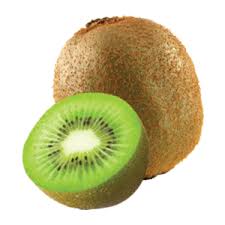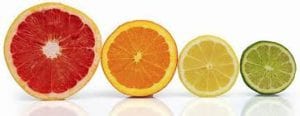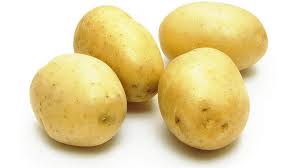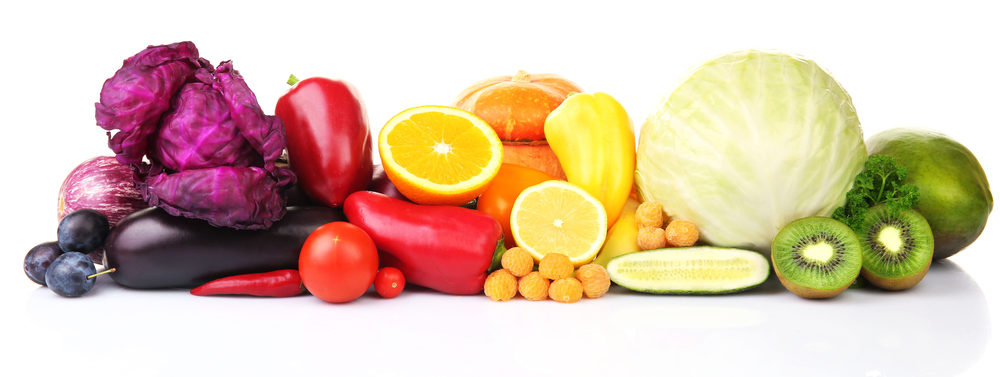 5 easy suggestions
5 easy suggestions
There are many ways to prepare fresh produce and taking into consideration the peel, skin or rind of many popular fruits and vegetables deserves attention. The outer colorful pigment part of fruits is often the most nutritious and the skins of many vegetables are very high in both soluable and insoluable fiber. Working as a bio-synergy unit, fruits, vegetables and their housing are meant to be together. So toss the peeler utensil and reap the benefits of added fiber, vitamins, antioxidants and phytonutrients.
These popular fruits and vegetables should be consumed whole – meaning the inside as well as the outside.
Apples – This one should be a gimme…. And here’s why. With four times more vitamin K than its flesh, most of its  insoluable fibre, and the location of an antioxidant called quercetin, the apple and it’s peel should enjoyed straight out of your hand, sliced with peanut butter or as added texture in a yummy pie.
insoluable fibre, and the location of an antioxidant called quercetin, the apple and it’s peel should enjoyed straight out of your hand, sliced with peanut butter or as added texture in a yummy pie.
Kiwi fruit – Stop just sco oping out the colorful insides of this fuzzy fruit and enjoy the unusual edible texture of the kiwi’s skin. Higher in vitamin C, antioxidants and flavonoids than the juicy flesh of the fruit, the fiber rich skin can be washed to remove some of the fuzziness and eaten whole, added to salads or juiced to maintain its goodness.
oping out the colorful insides of this fuzzy fruit and enjoy the unusual edible texture of the kiwi’s skin. Higher in vitamin C, antioxidants and flavonoids than the juicy flesh of the fruit, the fiber rich skin can be washed to remove some of the fuzziness and eaten whole, added to salads or juiced to maintain its goodness.
Citrus fruits – Yup, the peel or rind and the white pith of citrus fruits are edible – kind of. With twice the vitamin C as the juicy inside segments, higher concentrations of riboflavin, vitamin B6, calcium, magnesium and potassium it is worth the effort to capture some of these extra nutrients and antioxidants. The high levels of dietary fiber are compliments of the pectin found in the white pith part of the fruit so don’t pick it off entirely. A palatable way to reap the benefits of citrus rinds is to finely grade the peel into salads and dressings or into baking. Add twisted slices to  water where the beneficial oils will upgrade delicious water into a refreshing thirst quencher. Try preserving, picklingor infusing peals with oils to have a nutritious and tasty flavor booster on hand.
water where the beneficial oils will upgrade delicious water into a refreshing thirst quencher. Try preserving, picklingor infusing peals with oils to have a nutritious and tasty flavor booster on hand.

Potatoes – Ah, the potato jacket! Sadly left lying naked after the tender insides of a baked potato are scooped out. Or peeled away so whipped potatoes are fluffy and white. One of the first vegetables young people are asked to peel when wanting to help in the kitchen the potato is passed down and the peels come off. Often found discarded in the compost bin, by weight, the skin of the potato has half the DRI of soluble fiber, 90% of the iron and 7 times more calcium than the fleshy insides. The jacket is also loaded with potassium, B vitamins, magnesium and rich in antioxidants. However, when exposed to light, the nerve toxin solanine develops in the skin of the potato and and turns it a greenish hue. Now it’s unlikely that an individual would ingest an amount significant enough to cause any problems, but this part should discarded along with those with eyes or sprouts.
Carrots – Another victim of the traditional peeling party, the majority of the beneficial phytonutrients of the carrot are found just below the very thin skin. A lot of the excellent antioxidant sources of carotene and phenolic compounds are lost when the peeler scrapes away the outer layer. Safe time and nutrients by lightly scrubbing carrots and boost your vision at the same time.
It is suggested to purchase organic produce whenever possible especially when consumption of the outer layer is inevitable. In all cases wash all fruits and veggies and scrub those with tougher skins with a vegetable brush to remove any potential dirt, bacteria or pesticide residue.
Lastly, whether or not the peel, skin or rind is used, depositing any juicing remains, stock leftovers or excesses into a compost will return any remaining nutrients back to the earth where it is certain they will be used!



